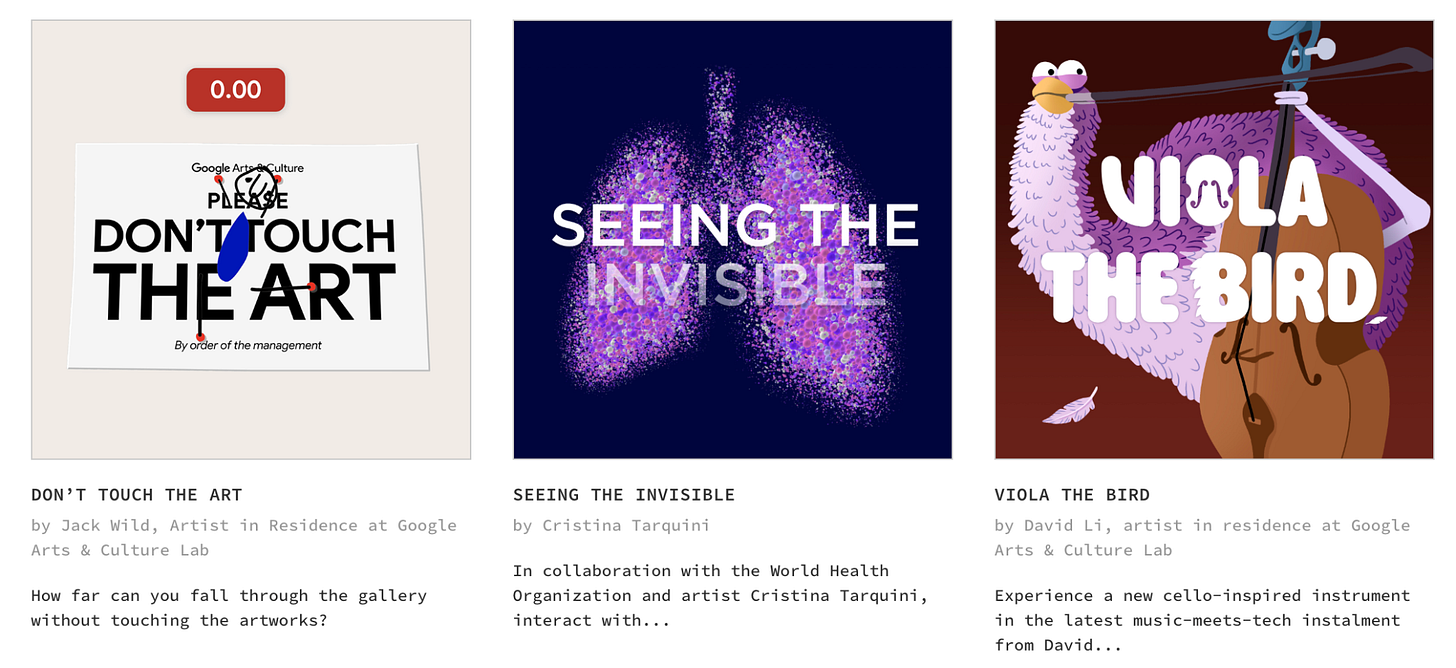Raising Curious Kids in a Clickbait World
A family-approved shortlist of apps, books and hacks that are value-add, not dopamine-dependent.
Last year, we drove from Barcelona to Manchester. I knew it wouldn’t be easy: it would be a 20-hour drive direct; we broke it up with a series of HomeExchange stops along the way. But ChatGPT lent a helping hand during the drive. I preloaded a handful of “quizzes” into the app, based on the kids' favourite TV shows. The prompt was simple: “Come up with a 10-question quiz on [show or movie series] suitable for playing with a five and 10-year-old at the same time. Make the answers multiple choice.”
As we drove, my wife asked the questions whilst I navigated the French autoroutes. My kids had only seen the first three seasons of Phineas and Ferb, but thanks to a careful prompt, it was able to fire questions towards them without spoilers. When the first question was too easy, we simply asked it to increase the difficulty. Whether the topic was Sonic Prime, Regular Show, or Avatar: The Last Airbender, the quizzes kept my kids occupied and took the pain out of the long drive.
I’ve found myself leaning on AI tools to help me in the moment as a parent. At bath time, I got asked a serious question by my then five-year-old son: “Who are the enemies of The Flash?” Google provided us with the factual answer: Mirror Master, Abra Kadabra, and Captain Cold. All correct, but not particularly exciting: a list of Z-list villains. He wanted something better. A pretty poor showing, I’m sure you’ll agree. He wasn’t impressed. So I suggested he come up with some baddies. He looked at the shark in the tub, up at me, and suggested “Shark Vader.” One prompt later, and this new supervillain was staring us in the face. I wish I could say the electrified water lightsaber was my idea. In the days since, he’s recruited Dog Vader and Darth Venom to his side, with more evil villainy to come.
As parents, we’re constantly searching for every bit of help we can get. Technology promised so much, but it can easily feel like we’re drowning in lost potential and a minefield of predatory in-app purchases that aim to fleece us as soon as our backs are turned (and our Face ID has been scanned by our tech-savvy kids whilst we nap). That’s why I’ve been a huge fan of Wonder Tools, Jeremy Caplan’s fantastic newsletter that helps source new websites and apps to make life and work more efficient, creative, and enjoyable. He’s a fellow dad, and we got talking about the various sites we use with our kids to help make parenting a little easier. AI is becoming increasingly useful, but it’s not essential: we're surrounded by generated images, automated suggestions, and algorithmic recommendations. However, there's something refreshing about resources that celebrate human imagination, curiosity, and hands-on exploration.
Jeremy and I racked our collective brains and came up with a hit list of resources that have made parenting easier for us. If you’re into this, subscribe to Jeremy’s newsletter to get more great recommendations like this in your inbox every week.
🧮 Building Brains Without Bots
Math, science, and coding tools that spark genuine curiosity
Math Tango has been a hit over the last few years. There’s a Pokémon-style element at play: build an island of different types of beasts, gotta catch them all, but you’re required to figure out different plus, minus, multiplication and division problems to make it happen. Yes, you’ll be paying a monthly fee, but your kids will be learning their sums and having fun whilst they do it.
Scratch, developed at the MIT Media Lab, is a superb program for learning to code. It’s fun and free for kids — and adults. My daughters have long enjoyed assembling Scratch’s visual blocks on screen to create interactive stories, games and animations. It’s designed for kids 8 to 16. Scratch Jr is a great free alternative for kids 5-7.
Nature's Digital Detective
Seek is one of our favourite family apps. Point the app at any plant, flower, animal or bug you see on a walk to learn more about it. It’s given us insight into many of the little creatures and greenery around us.
📚 Words That Work Wonders
Reading and language tools that don't need algorithms
Libby lets you access thousands of free ebooks or audiobooks with a free library card. It works for more than 90% of public libraries in North America, and Libby is available in 78 countries worldwide. Keep thousands of dollars in your pocket rather than funding Jeff Bezos’ lavish wedding in Venice.
Reading Eggs for English is a simple resource for learning how to read. Aimed at kids 2-13, it’s free to try for a month and $10/month thereafter for up to four kids. Be warned: the app feels like it hasn’t been shown a lot of love for a while, but if you can forgive some awkward UI interactions, this is a solid, research-backed approach to learning English.
Khan Academy is the most robust online resource for helping kids with learning almost any school subject. It’s completely free with no ads. Khan Academy Kids offers engaging learning activities and games for children aged 2-8. It’s also completely free and ad-free, making it enjoyable for both math and reading.
🗣️ Talk Your Way to Fluency
Duolingo has become a daily ritual in our homes. The new AI conversation feature allows you to practice speaking in Spanish, French, German, Italian, and Portuguese. For five people, we pay $240 annually. Now that the company is expected to make a billion dollars this year, some are upset that the company is using AI in place of contract workers. Others find the Duolingo app pushy with its various streaks, nudges, and reminders to keep logging back in.
📱 Screens That Serve (Not Seduce)
Digital tools that enhance rather than overwhelm
Consider a Light Phone Experiment with freeing yourself (and your kids) from smartphone addiction with a full-on dumbphone. Reviews for the third edition have been glowing: Wired gave it 8/10 — $ 699 for version 3, or $299 for version 2.
Try the Dumb Phone app. Simulate a simple device with an app that strips away everything but links the core phone functions: camera, maps, calendar, and photos. Imitate a simple device without dropping $500 on the love child of a Nokia and a Kindle.
The Dumbest Phone Is Parenting Genius. A landline for kids? If it’s not too late, consider a tactic detailed in Rheana Murray’s piece for The Atlantic. The idea: install a landline. Buy that hamburger phone you always dreamed of as a kid; go with a “landline as a service” company like Tincan and their gorgeous house phones; or if you’re more technically inclined, roll your own VOIP line for a fraction of the cost. The bottom line: delay the start of smartphone life.
🏠︎ Family Screen Time That Actually Works
Common Sense Media. Is a show, movie or video game age-appropriate? Get a quick sense of whether it’s a good fit for your family. I use this on a regular basis and it’s a godsend, even if the age ranges are a little conservative (I tend to reduce two years from any age recommendation they provide).
Kanopy is a terrific free resource, also accessible with your library card, featuring educational videos, documentaries, and classic films. A unique feature: watch Oscar-winning short films you won’t find on other streaming platforms. Kanopy Kids is its special, curated collection for learning, which is less commercial than the kids sections on Netflix.
JustWatch. Figure out which platform hosts the movie or show you want.
Nex. Like a Nintendo Wii made for 2025, this video game system gets our bodies moving with fun, non-violent, family-friendly games. Four of us can play together. There are games with sports, dancing, trivia, as well as arcade and adventure games. One subscription gets you all the games — no need to buy a bunch of $50 games.
💡 Make Something From Nothing
Creative tools that celebrate human imagination
Chrome Music Lab Compose little tunes, even if you have no musical experience. Explore digital instruments and sound games and save your favourite clips to share. It’s a nice way to create your own human music as an alternative to Google's AI-generated results from MusicLM, which is also a fun tool for making music.
Metronaut Easily access a lifetime’s worth of sheet music from my phone or iPad. The app lets me play my violin with an orchestral or piano accompaniment. Tomplay works well on Android and iOS and includes a wider range of chamber music. I pay $82/year for it.
muted.io has a vibrant collection of interactive tools and visual references to help kids — or their parents — absorb music theory.
Feeling more experimental? Play at the intersection of AI and music with Google’s MusicLM or Udio, where you can generate a song just from a prompt.
🎨 Art Adventures & Creative Experiments
Tate Kids — An Arty Playground. Play art games, watch cute videos, try out little projects, and stretch your artistic mind with this well-designed resource for one of the UK’s great art museums.
Make an animated drawing. Turn a sketch into a playful moving image. This service from Meta lets you animate a kid’s drawing.
Draw A Fish. This simple, low-fidelity drawing game lets you draw a little fish with your computer mouse, then see it swim on screen.
Google’s Arts & Culture Experiments include dozens of playful little applications for learning about the worlds of painting, sculpture, music and more. It’s all free, and you can start exploring even if you just have a few minutes.
⚡ Spark Curiosity
The Week Junior is a terrific print magazine our family loves. Each 32-page issue is designed for kids aged 8 to 14. As grown-ups, my wife and I often enjoy reading it as an alternative to heavier news publications. The colourful pages feature short, curated stories about the major news of the week. We also enjoy puzzles, weekly debates, photography pages, and arts and culture pieces. Get 25 issues a year for $49/year or $59 for print + digital access.
How to Raise a Reader by Pamela Paul and Maria Russo is a wonderful guide to fabulous kids’ books. I love the recommendations for kids of all ages, across genres. It grew out of this free NYTimes guide (gift link). As of this writing, it’s less than $10 on Amazon.
Smash Boom Best is a favourite family podcast. Each episode “takes two cool things, smashes them together and lets you decide which is best.” The debate format is playful; the audio storytelling is outstanding.
But Why: A podcast for curious kids explores creative questions from kids like “why do dogs have tails?” and “what happens to a forest after a fire” in a way that respects the intelligence of kids and their adults.
Say Hello
How did you like this week’s issue? Your feedback helps me make this great.
Loved | Great | OK | Meh | Bad
Thanks to Jeremy for the collab. I hope you all find something useful here. Drop your favourite kid-friendly resources in the comments below.










